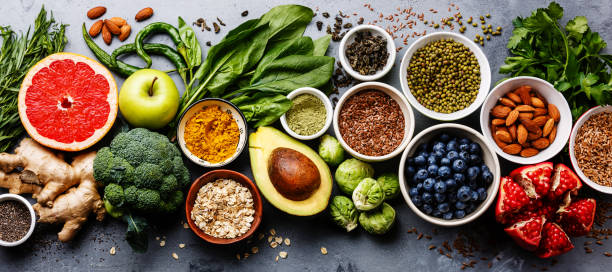By Sheyna Haisman-Holmes
In Ayurveda there are three laws that govern nutrition and they are called the nyāyas. Everything we consume must be digested, broken down, assimilated and absorbed at a cellular level in order for proper nourishment to take place. Different tissues need different nutrients and these needs are always changing. Nutrition of the tissues is called dhātu poshanam. The intelligence of the body and cells knows what to select based on the tissues requirements. Nutritional needs could depend on how much our muscles are growing due to physical activity or possible bone repair after a fracture. We may need more nourishment after being sick and more vitamin D if we are exposed to less sunlight. Being aware of the nyāyas and the food we consume can help us be optimally nourished.
~Kedāra kulya nyāya– Law of Irrigation. The end product of digested food is carried by the circulatory system throughout the body. This law refers to irrigation because the nutrients get spread over the whole body, as water does to a field.
~Khale kapota nyāya– Law of Selectivity. Each tissue selects what it needs from the nutrients passing through the body. Kapota means pigeon, so we can imagine a pigeon selectively picking up one grain at a time, as it’s needed. This is where the intelligence of the tissues selects what it’s lacking or what it needs for growth.
~Kshira dadhi nyāya– Law of Transformation. This nyāya uses nutrients to make up the tissues themselves. This is where the conversion of immature tissue transforms into mature tissue. The end product is ojas, which is the pure essence of all dhātus that is largely responsible for vitality and immunity. This law is referred to as the milk to curd law. We can imagine liquid turning into a solid substance, as nutrients to body mass.
Now that we know the intelligence of our bodies is at work to evenly distribute nutrients to the right places, we can do our job by eating the proper foods and keeping our Agni (digestive fire) strong. Nutrition is a big topic and is different for each person and body type. There are some basic rules we can follow to assure easy digestion by kindling the Agni, keeping it consistently stoked and eating nutrient dense foods.
Although the body can select and distribute nutrients, the food has to be broken down enough for there to be available nutrients to work with. Ayurveda says that nutrients are more digestible and bioavailable if they are cooked. Many of us don’t have prime digestion all the time, so staying away from raw cold foods is preferred for absorption of nutrients. We can do things daily to kindle our Agni like sipping warm lemon water in the morning, eating ginger before meals, not drinking lots of liquids with or after meals, eating at consistent times, avoiding lots of snacking and practicing eating slowly. Another factor in the strength of our digestion is keeping it ¼ empty. Filling the stomach can cause heaviness, sleepiness and sluggish digestion. For easy digestion, we can eat warm cooked foods with warming spices. Cooking with ghee and spices can help nutrients be carried and delivered deeper into the cells and tissues.
Ayurveda says to chew your food very thoroughly; every bite of food should be chewed once for each tooth in your mouth- that’s about 32 times! The digestive system has to work extra hard to break down food that gets swallowed after barely chewing. This can increase gas and bloating and impair proper assimilation of nutrients consumed. Consuming a lot of liquids before, during or after a meal can interfere with the potency of the digestive fluids, causing weakened digestion. Iced drinks further contribute to this issue by cooling down the digestive fire. Eating seasonal fruits and veggies is another great rule to eat by. This allows for a variety of foods to be eaten year round, as well as supporting local farmers and sourcing local food that doesn’t require big transportation.
There are certain foods that should be eaten on their own, such as fruits. Fruit can be easy to digest, but isn’t compatible with cooked meals. There are other food incompatibilities like mixing dairy and fruit, dairy and fish or eggs & fruit. These rules are guidelines that have some wiggle room due to culture and personal lifestyle. There is a concept in Ayurveda called satmya and asatmya. Satmya is how suitable something is to you personally. This can do with where you live, what you grew up eating, what grows locally and what cultural foods and dishes you are accustomed to. If you grew up in New Orleans eating seafood stew with crème, that may be something that is satmya to you, but not for another person. Another example could be someone who grew up in Mexico eating lots of chillies. For someone traveling to Mexico who isn’t used to hot weather or hot food, this could cause a huge increase in Pitta dosha. The opposite of satmya is asatmya. Asatmya means unwholesome and pertains to making choices that aren’t in alignment with what suits you. This concept takes into account the individual differences in peoples bodies and that the same rules don’t always suit everyone all the time.
May we all have strong Agni, treat our bodies with respect, eat seasonally, eat locally, listen to our intuition about eating and be deeply nourished!
1/18/23
